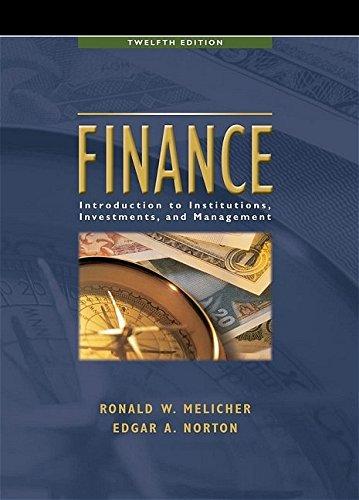
1. You hold a 3-stock portfolio (APPLE, IBM, TESLA) from the S\&P500. The adjusted close price data for the 3 stocks and the S\&P500 index price data are available on Canvas (Click Here). You would like to add one new stock of your choice in the portfolio. Download daily close adjusted price data for your selected stock from http://f inance yahoo. com/ and consider the period from 1/1/2018 to 30/09/2022. (a) Construct an equally-weighted portfolio of these 4 stocks ( 25% in each stock). Calculate the mean daily returns for each of these 4 stocks, the equally-weighted portfolio and the market index and then, using the whole data period, compute a 66 variancecovariance matrix. Use the appropriate elements from the variance-covariance matrix to calculate the market beta for each stock and the market beta of your portfolio. Discuss your results. [10 marks] (b) One of your analysts claims that the daily expected return and standard deviation of APPLE is 0.03% and 3%, respectively. However, estimates for IBM, TESLA, S\&P500 and your stock are not available and therefore one should rely on historical data. For your equally-weighted portfolio, find the annualised return of your portfolio as well as its annualised standard deviation. [15 marks] (c) Apply the Capital Asset Pricing Model (CAPM) to your portfolio by estimating the following regression using Ordinary Least Squares: R(p)tR(f)t=a+[R(m)tR(f)t]+ut, where R(p) is the return of your portfolio at day t,R(m) is the return of the market index and u is the disturbance term. R(f) is the risk-free rate that is assumed to remain constant during the period of the analysis at a 1% rate per annum; thus, the daily risk-free rate is 0.01/250. Verify that your computed beta in sub-question (a) is similar to the beta from the regression. Report your estimates for alpha () and beta () and their standard errors, and discuss the significance of your results. [15 marks] (d) State the definition of idiosyncratic (also called unsystematic) risk in the context of capital asset pricing model. Using the results from sub-question (c), compute the idiosyncratic risk of your portfolio. Finally, plot the idiosyncratic risk over time and discuss its dynamic process. [10 marks] Notes: Maximum number of words for this question is 1,000 . The word (PDF) file will be marked for this question, while the excel file will only be used to verify the calculations. 1. You hold a 3-stock portfolio (APPLE, IBM, TESLA) from the S\&P500. The adjusted close price data for the 3 stocks and the S\&P500 index price data are available on Canvas (Click Here). You would like to add one new stock of your choice in the portfolio. Download daily close adjusted price data for your selected stock from http://f inance yahoo. com/ and consider the period from 1/1/2018 to 30/09/2022. (a) Construct an equally-weighted portfolio of these 4 stocks ( 25% in each stock). Calculate the mean daily returns for each of these 4 stocks, the equally-weighted portfolio and the market index and then, using the whole data period, compute a 66 variancecovariance matrix. Use the appropriate elements from the variance-covariance matrix to calculate the market beta for each stock and the market beta of your portfolio. Discuss your results. [10 marks] (b) One of your analysts claims that the daily expected return and standard deviation of APPLE is 0.03% and 3%, respectively. However, estimates for IBM, TESLA, S\&P500 and your stock are not available and therefore one should rely on historical data. For your equally-weighted portfolio, find the annualised return of your portfolio as well as its annualised standard deviation. [15 marks] (c) Apply the Capital Asset Pricing Model (CAPM) to your portfolio by estimating the following regression using Ordinary Least Squares: R(p)tR(f)t=a+[R(m)tR(f)t]+ut, where R(p) is the return of your portfolio at day t,R(m) is the return of the market index and u is the disturbance term. R(f) is the risk-free rate that is assumed to remain constant during the period of the analysis at a 1% rate per annum; thus, the daily risk-free rate is 0.01/250. Verify that your computed beta in sub-question (a) is similar to the beta from the regression. Report your estimates for alpha () and beta () and their standard errors, and discuss the significance of your results. [15 marks] (d) State the definition of idiosyncratic (also called unsystematic) risk in the context of capital asset pricing model. Using the results from sub-question (c), compute the idiosyncratic risk of your portfolio. Finally, plot the idiosyncratic risk over time and discuss its dynamic process. [10 marks] Notes: Maximum number of words for this question is 1,000 . The word (PDF) file will be marked for this question, while the excel file will only be used to verify the calculations







